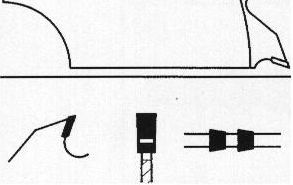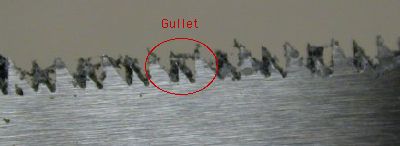No, this isn’t Scottish cuisine we’re talking about (though I do like haggis…) nor is it a law firm from Lord of the Rings. No doubt if I don’t get to the point quickly you’ll be entering them into your favorite search engine to find out what these odd words are – though with the readership of this blog, it wouldn’t surprise me in the least if a substantial number of you know the meaning of the words already. It struck me when I heard them that each industry does have jargon and if you’re not plugged in, you just wouldn’t know…

The kerf is the area of a cut made with a blade that is wider than the blade body itself. If you look at the image to the right, you’ll see that if one views a blade from the thin side, the teeth are wider than the blade. This creates the kerf while cutting so the blade doesn’t bind. In some saws, this is accomplished by offsetting the teeth from one side to another in an alternating pattern, these are called sets.
Now that you know we’re talking saws,

Garden variety gullets
you probably guessed that the gullet is the gap between the teeth. Not only does this provide definition for the teeth, it serves the practical purpose of providing an area for the material that has been removed to occupy while the saw is in operation. This removed material is called swarf – you might also know it as sawdust or even noodles.


Now you can say you’ve learned something while surfing the net, not that you’ll likely ever use it. But I bet the next time you’re playing Scrabble, you might have some new entrants…It’s also a prime example of jargon in an industry, and honestly, I never thought of the innovation in the art of cutting, but there you have it. It’s clear that smart people have put deep thought into how to best cut materials. Scroll to the bottom of the entry to see swarf and a noodle.










I thought I was the only one who liked Haggis. But I will admit the vegetarian haggis for Burns night cracks me up. Oatmeal in a sythetic sheep’s stomach. I mean, why bother?
B